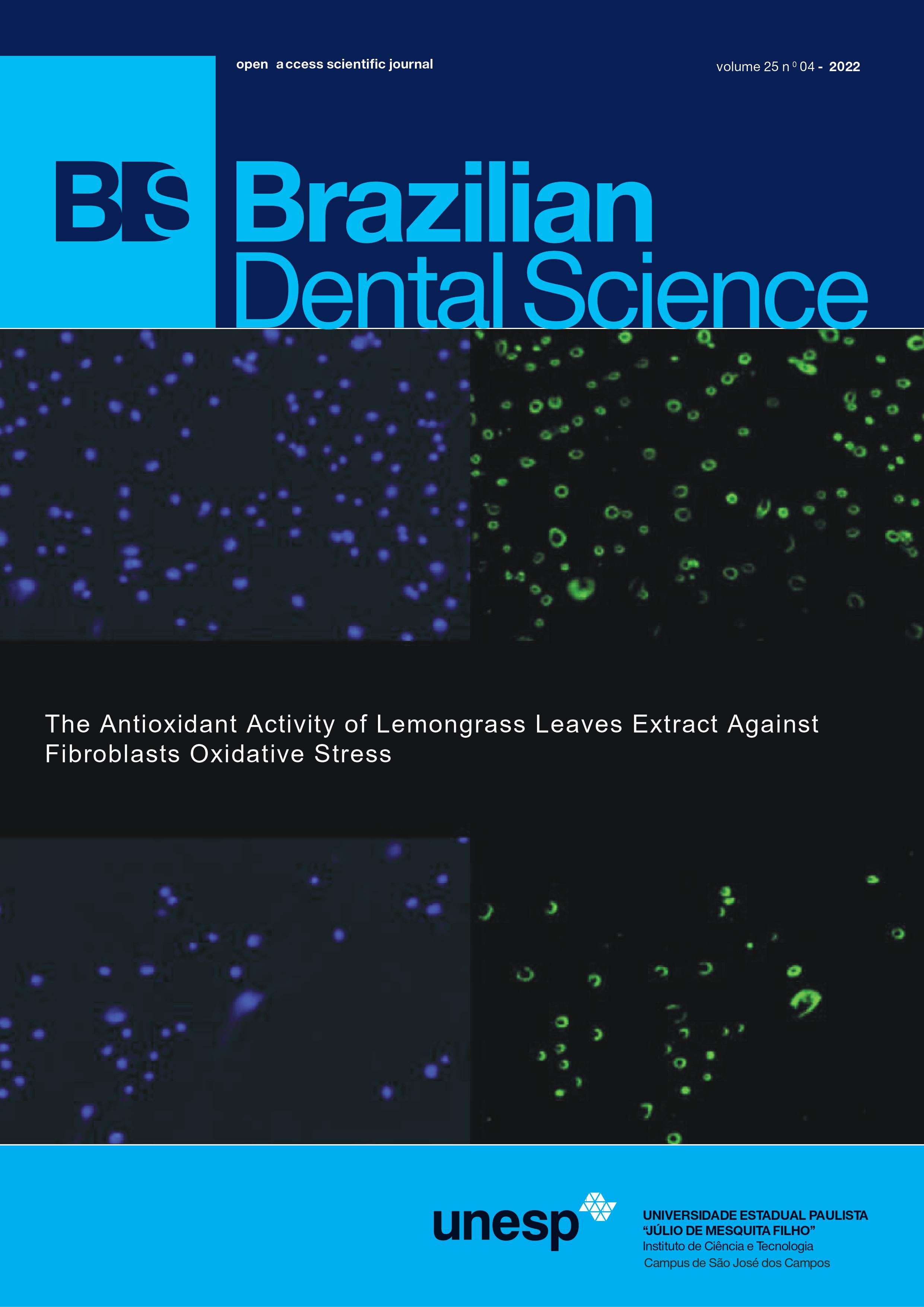Low level laser therapy versus benzydamin in prevention and treatment of oral mucositis induced by anticancer treatments (clinical and biochemical study)
DOI:
https://doi.org/10.4322/bds.2022.e3406Abstract
Objective: In this study, patients undergoing neck and head radiotherapy (RT) with or with no chemotherapy
were contrasted to the low-level laser therapy (LLLT) efficacy against benzydamine hydrochloride in treating and
preventing oral mucositis (OM) (CHT). Material and Methods: This study included 90 individuals with neck
and head cancer who were undergoing radiotherapy (RT) individually or in mixture with chemotherapy (CHT),
varying in age from 18 to 80 years. Three equal groups were randomly formulated: Group, I patients were using
oral care only, Group II patients were using benzydamine hydrochloride mouth rinse, and Group III patients
were medicated by using low-level laser therapy. The National Institute of Cancer-Common Toxicity Criteria
(NIC-CTC) and the World Health Organization (WHO) were used to rate the severity of OM, and the pain was
validated utilizing a visual analog scale (VAS). The salivary level of tumor necrotic factor-a (TNF- a) was assayed. Results: As per WHO and NIC, the grade of oral mucositis at the end of cancer treatment was less in the LLLT
group than in the other two groups. The alteration in TNF-a level was not significant. The laser group is more
liable to have less salivary levels of the pro-inflammatory cytokines TNF- a. Conclusion: The incidence of oral
mucositis severity has seemed to be reduced due to the prophylactic use of benzydamine hydrochloride and laser
therapy protocols. However, laser therapy was more efficient in controlling the shape and progression of OM.
KEYWORDS
Oral mucositis; Photobiomodulation; Radiation therapy; Chemotherapy; Low-level laser therapy; Benzydamine
Downloads
Downloads
Published
How to Cite
Issue
Section
License
Brazilian Dental Science uses the Creative Commons (CC-BY 4.0) license, thus preserving the integrity of articles in an open access environment. The journal allows the author to retain publishing rights without restrictions.
=================




























